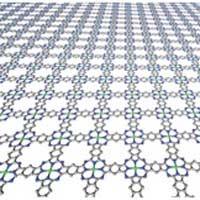 Structurally reconfigurable two-dimensional conjugated polymers can give a new breadth to applications of two-dimensional materials in electronics.
Structurally reconfigurable two-dimensional conjugated polymers can give a new breadth to applications of two-dimensional materials in electronics.
Wednesday, May 20, 2020
Synthesizing large-scale 2D conjugated polymers
 Structurally reconfigurable two-dimensional conjugated polymers can give a new breadth to applications of two-dimensional materials in electronics.
Structurally reconfigurable two-dimensional conjugated polymers can give a new breadth to applications of two-dimensional materials in electronics.
Breakthrough in research on production of 2D crystals with excellent optical properties
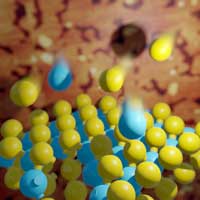 For the first time, monolayers of transition metal dichalcogenides with excellent optical properties were grown.
For the first time, monolayers of transition metal dichalcogenides with excellent optical properties were grown.
Researchers develop material capable of being invisible or reflective in IR spectrum
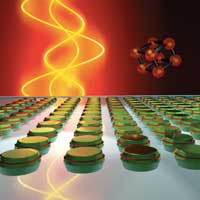 Researchers have proposed a new metamaterial capable of changing its optical properties without any mechanical input. This development could result in a significant improvement in the reliability of complex optical devices while making them cheaper to manufacture.
Researchers have proposed a new metamaterial capable of changing its optical properties without any mechanical input. This development could result in a significant improvement in the reliability of complex optical devices while making them cheaper to manufacture.
Visualizing at the single-molecule level the processes involved in a biological nanomachine
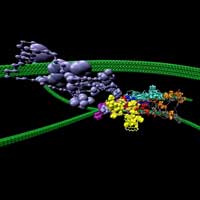 Researchers have for the first time ever succeeded in visualizing at the single-molecule level the processes involved in a biological nanomachine, known as the cellulosome, as it degrades crystalline cellulose. The fundamental insights thus obtained could support sustainable concepts of cellulose utilization to make a breakthrough in industrial biotechnology.
Researchers have for the first time ever succeeded in visualizing at the single-molecule level the processes involved in a biological nanomachine, known as the cellulosome, as it degrades crystalline cellulose. The fundamental insights thus obtained could support sustainable concepts of cellulose utilization to make a breakthrough in industrial biotechnology.
'Nanometrology lab on a chip' within reach thanks to new compact, optical sensor
 Researchers have developed a new, integrated optical sensor that provides increased resolution in measurements and paves the way for fully integrated and compact optical sensors including lasers and detectors for on-chip sensing platforms.
Researchers have developed a new, integrated optical sensor that provides increased resolution in measurements and paves the way for fully integrated and compact optical sensors including lasers and detectors for on-chip sensing platforms.
Attosecond physics: Quantum brakes in molecules
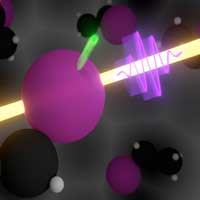 Physicists measured the flight times of electrons emitted from a specific atom in a molecule upon excitation with laser light. This has enabled them to measure the influence of the molecule itself on the kinetics of emission.
Physicists measured the flight times of electrons emitted from a specific atom in a molecule upon excitation with laser light. This has enabled them to measure the influence of the molecule itself on the kinetics of emission.
Nanobowls serve up chemotherapy drugs to cancer cells
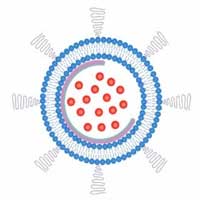 Researchers report a way to stabilize liposomes by embedding a stiff nanobowl in their inner cavity.
Researchers report a way to stabilize liposomes by embedding a stiff nanobowl in their inner cavity.
One-step synthesis of new nanomaterials with higher anti-SARS-CoV-2 activity
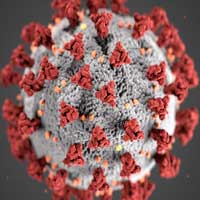 The goal of a new project is to use green, environmentally friendly, one-step synthesis routes of new silver-nanoparticle-based nanomaterials with anti-SARS-CoV-2 activity.
The goal of a new project is to use green, environmentally friendly, one-step synthesis routes of new silver-nanoparticle-based nanomaterials with anti-SARS-CoV-2 activity.
Scientists use light to accelerate supercurrents, access forbidden light, quantum world
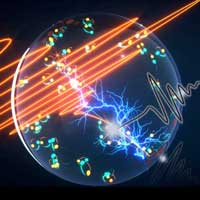 Scientists are using light waves to accelerate supercurrents and access the unique properties of the quantum world, including forbidden light emissions that one day could be applied to high-speed, quantum computers, communications and other technologies.
Scientists are using light waves to accelerate supercurrents and access the unique properties of the quantum world, including forbidden light emissions that one day could be applied to high-speed, quantum computers, communications and other technologies.
Subscribe to:
Comments (Atom)
